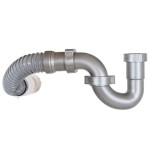How to Measure a Bathroom Undermount Sink
Choosing the right undermount sink involves careful consideration of its dimensions. Accurate measurements are crucial for ensuring a proper fit with the existing countertop cutout. This guide outlines the necessary steps to obtain precise measurements for a bathroom undermount sink.
Measuring the Length: The length of an undermount sink is its longest dimension from one outside rim to the other. Use a tape measure to determine this length. Position the tape measure across the widest part of the sink’s rim, ensuring the tape measure remains straight and level. Record the measurement in inches or millimeters, depending on the preferred unit.
Measuring the Width: The width is the shorter dimension of the sink, measured perpendicular to the length. Place the tape measure across the shortest distance between the outside rims of the sink, ensuring the tape measure is perpendicular to the length measurement. Record this measurement, using the same unit as the length measurement.
Measuring the Depth: The depth refers to the vertical distance from the top rim of the sink to its deepest point at the bottom. Place the end of the tape measure on the top rim and extend it down to the deepest part of the basin. Record the depth measurement, ensuring consistency with the units used for length and width.
Measuring the Sink Reveal: The sink reveal, also known as the offset, is the distance the sink is set back from the front edge of the countertop. This measurement is critical for achieving the desired aesthetic and functional balance. Measure from the edge of the sink cutout to the front edge of the countertop. This measurement dictates how much of the countertop’s edge will be visible.
Measuring the Drain Opening: The drain opening’s size is crucial for compatibility with plumbing fixtures. Measure the diameter of the drain opening. This measurement is typically standardized, but verification is important to ensure the correct drain assembly can be installed.
Measuring for Faucet Placement: While not directly a sink dimension, faucet placement considerations are essential during the sink selection process. If the faucet will be mounted on the countertop, measure the distance from the center of the drain opening to the desired location of the faucet holes. This measurement will help determine appropriate faucet configurations and ensure proper alignment.
Understanding Countertop Cutout Dimensions: The countertop cutout dimensions must be smaller than the overall sink dimensions to allow the sink lip to rest on the countertop. Consult the manufacturer’s specifications for the recommended cutout size for the specific sink model. This information is crucial for fabricators to create the precise opening needed for proper installation.
Template Use: Many undermount sinks come with a pre-cut template. This template provides an accurate outline of the required countertop cutout. If a template is available, use it to ensure precise measurements and simplify the cutout process. Trace the template onto the countertop surface for accurate cutting.
Double-Checking Measurements: Accuracy is paramount when measuring for an undermount sink. Double-check all measurements before making any purchases or beginning installation. Incorrect measurements can lead to costly mistakes and delays in the project.
Professional Consultation: If unsure about any aspect of the measurement process, consult a qualified plumbing professional or countertop installer. Their expertise can ensure accurate measurements and a successful installation.
Documentation: Keep a detailed record of all measurements, including the sink's length, width, depth, drain opening diameter, and countertop cutout dimensions. This documentation will be valuable during the installation process and can be used as a reference for future maintenance or replacements.
Material Thickness Considerations: Consider the thickness of the countertop material when determining the final sink placement. Thicker countertops might require adjustments to the sink reveal or overall dimensions to maintain the desired aesthetic and functionality.
Corner Radius Measurement: If choosing a sink with rounded corners, measure the radius of the corners. This information is essential for ensuring compatibility with the countertop cutout and achieving a seamless fit. The radius is measured from the intersection of the two sides forming the corner to the outer edge of the curve.
Cabinet Size Considerations: The size of the bathroom cabinet must also be considered when selecting an undermount sink. Ensure the sink's dimensions are compatible with the cabinet's interior space and that there is sufficient clearance for plumbing fixtures and other components.
Accessibility Considerations: If designing a bathroom for users with mobility limitations, consider accessibility guidelines when choosing sink dimensions and placement. Ensure sufficient knee clearance and reachable controls for optimal usability.
Maintenance and Cleaning Considerations: Consider the ease of maintenance and cleaning when choosing an undermount sink. Sinks with complex shapes or tight corners can be more challenging to clean. A smooth, continuous surface between the sink and countertop simplifies cleaning and enhances hygiene.

How To Measure A Bathroom Sink Size Lavatory For Replacement

How To Measure A Bathroom Sink Size Lavatory For Replacement

3 Ways To Measure A Kitchen Sink Wikihow

Ruvati 16 In X 11 Undermount Bathroom Sink Brushed Stainless Steel Rvh6107 The Home Depot

Kraus Elavo Large Rectangular Ceramic Undermount Bathroom Sink In White With Overflow Kcu 251 The Home Depot

Undermount Bathroom Sink Buyer S Guide The Family Handyman
How To Measure A Vanity Sink Bathroom Dimensions Standard Size Vevano
How To Measure A Vanity Sink Bathroom Dimensions Standard Size Vevano

Undermount Bathroom Sink Buyer S Guide The Family Handyman

What S An Undermount Sink 2024 Guide To Sinks With Examples Badeloft
Related Posts







